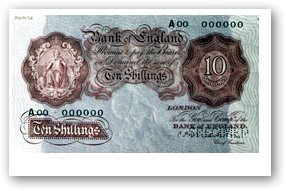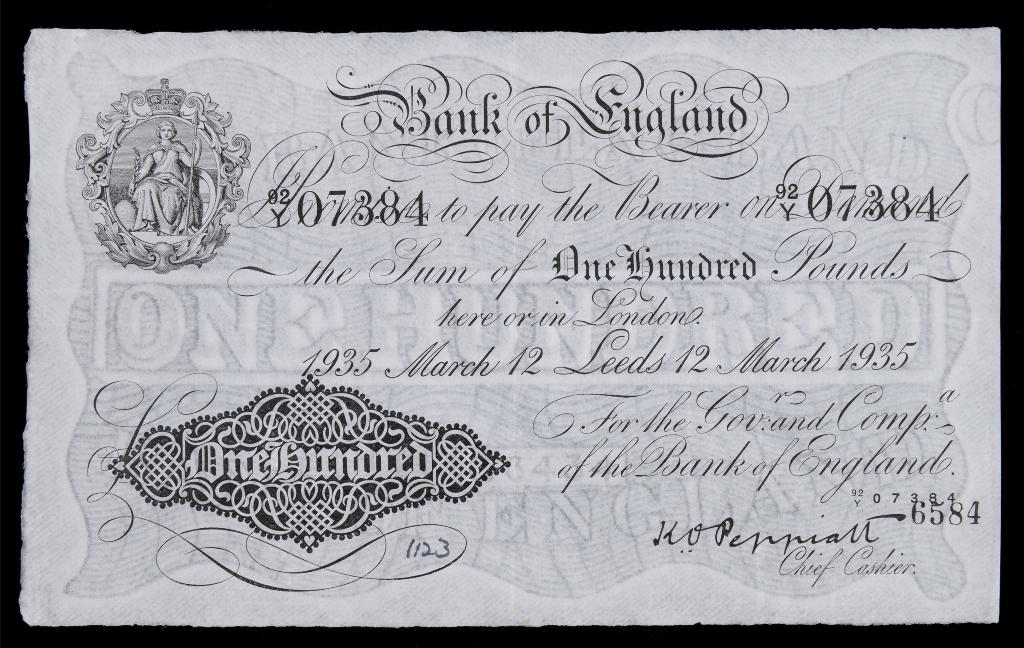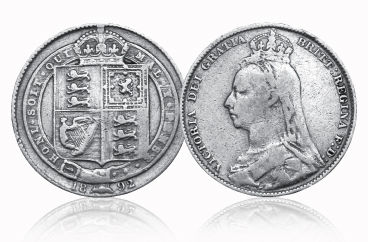The first recorded use of paper money was in the 7th century in China. However, the practice did not become widespread in Europe for nearly a thousand years.
 In the 16th century the goldsmith-bankers began to accept deposits, make loans and transfer funds. They also gave receipts for cash, that is to say gold coins, deposited with them. These receipts, known as “running cash notes”, were made out in the name of the depositor and promised to pay him on demand.
In the 16th century the goldsmith-bankers began to accept deposits, make loans and transfer funds. They also gave receipts for cash, that is to say gold coins, deposited with them. These receipts, known as “running cash notes”, were made out in the name of the depositor and promised to pay him on demand.
Many also carried the words “or bearer” after the name of the depositor, which allowed them to circulate in a limited way. In 1694 the Bank of England was established in order to raise money for King William III’s war against France. Almost immediately the Bank started to issue notes in return for deposits. Like the goldsmiths’ notes, the crucial feature that made Bank of England notes a means of exchange was the promise to pay the bearer the sum of the note on demand. This meant that the note could be redeemed at the Bank for gold or coinage by anyone presenting it for payment; if it was not redeemed in full, it was endorsed with the amount withdrawn. These notes were initially handwritten on Bank paper and signed by one of the Bank’s cashiers. They were made out for the precise sum deposited in pounds, shillings and pence. However, after the recoinage of 1696 reduced the need for small denomination notes, it was decided not to issue any notes for sums of less than £50. Since the average income in this period was less than £20 a year, most people went through life without ever coming into contact with banknotes.
During the 18th century there was a gradual move toward fixed denomination notes. From 1725 the Bank was issuing partly printed notes for completion in manuscript. The £ sign and the first digit were printed but other numerals were added by hand, as were the name of the payee, the cashier’s signature, the date and the number. Notes could be for uneven amounts, but the majority were for round sums. By 1745 notes were being part printed in denominations ranging from £20 to £1,000.
In 1759, gold shortages caused by the Seven Years War forced the Bank to issue a £10 note for the first time. The first £5 notes followed in 1793 at the start of the war against Revolutionary France. This remained the lowest denomination until 1797, when a series of runs on the Bank, caused by the uncertainty of the war, drained its bullion reserve to the point where it was forced to stop paying out gold for its notes. Instead, it issued £1 and £2 notes. The Restriction Period, as it was known, lasted until 1821 after which gold sovereigns took the place of the £1 and £2 notes. The Restriction Period prompted the Irish playwright and MP, Richard Brinsley Sheridan, to refer angrily to the Bank as “… an elderly lady in the City”. This was quickly changed by cartoonist, James Gillray, to the Old Lady of Threadneedle Street, a name that has stuck ever since.
The first fully printed notes appeared in 1855 relieving the cashiers of the task of filling in the name of the payee and signing each note individually. The practice of writing the name of the Chief Cashier as the payee on notes was halted in favour of the anonymous “I promise to pay the bearer on demand the sum of …”, which has remained unchanged on notes to this day. The printed signature on the note continued to be that of one of three cashiers until 1870, since when it has always been that of the Chief Cashier.
The First World War saw the link with gold broken once again; the Government needed to preserve its stock of bullion and the Bank ceased to pay out gold for its notes. In 1914 the Treasury printed and issued 10 shilling and £1 notes, a task which the Bank took over in 1928. The gold standard was partially restored in 1925 and the Bank was again obliged to exchange its notes for gold, but only in multiples of 400 ounces or more. Britain finally left the gold standard in 1931 and the note issue became entirely fiduciary, that is wholly backed by securities instead of gold.
The Bank has not always been the sole issuer of bank notes in England and Wales. Acts of 1708 and 1709 had given it a partial monopoly by making it unlawful for companies or partnerships of more than six people to set up banks and issue notes. The ban did not extend to the many provincial bankers – the so-called country bankers – who were all either individuals or small family concerns. However, the Country Bankers’ Act of 1826 allowed the establishment of note issuing joint-stock banks with more than six partners, but not within 65 miles of London. The Act also allowed the Bank of England to open branches in major provincial cities, which gave it more outlets for its notes.
In 1833 the Bank’s notes were made legal tender for all sums above £5 in England and Wales so that, in the event of a crisis, the public would still be willing to accept the Bank’s notes and its bullion reserves would be safeguarded. It was the 1844 Bank Charter Act which was the key to the Bank achieving its gradual monopoly of the note issue in England and Wales. Under the Act no new banks of issue could be established and existing note issuing banks were barred from expanding their issue. Those, whose issues lapsed, because, for example, they merged with a non-issuing bank, forfeited their right of issue. The last private bank notes in England and Wales were issued by the Somerset bank, Fox, Fowler and Co in 1921.



















